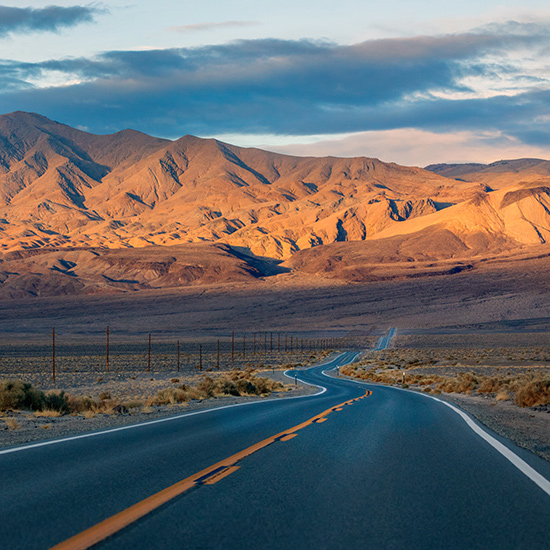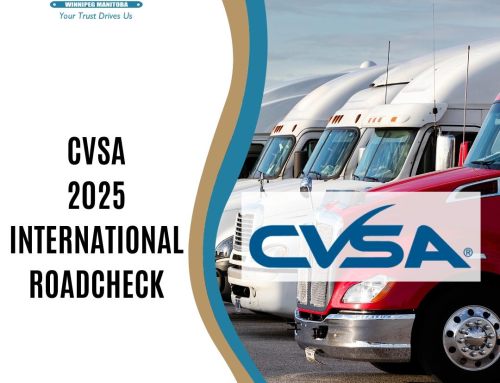 Mountain Driving in a Big Rig
Mountain Driving in a Big Rig
It’s easy to have a love-hate relationship with mountain driving.
Most drivers love the beautiful scenery and the change from driving on a flat highway that looks the same mile after mile. It’s also kind of nice to hit flat topography after several straight days in the mountains.
It’s also easy to hate mountain driving because of the additional challenges and risks that are involved. And there are many additional challenges and risks from overheating your brakes to winter storms. Love it or hate it, mountain driving is something that every over-the-road driver has to do.
Here are 8 tips that are good for beginners and a good refresher for experienced drivers.
It’s Not a Race
In trucking, it’s never a race! Slow and steady will get you where you’re going safely. The fact is it takes longer traveling through the mountains. Allow extra time through the mountains while you’re trip planning.
Allowing extra time will reduce your stress. Mountain driving can be stressful, and you’ll add to your stress level by falling behind schedule due to poor trip planning. A good rule of thumb is to allow about 25% more time for your mountain miles. This is due to lower speed limits, brake checks, and a higher chance of traffic back-ups due to construction or accidents.
Know the Grade
Every incline and decline are posted with grade information. The grade information is posted throughout as the grade changes. Pay attention to these signs!
Steeper and longer grades (passes) usually have a brake check area with large information signs alerting you to what’s coming up. They’ll tell you the distance, posted truck speed limits, and the grades you’ll negotiate.
What is a mountain grade? Grades tell you the road elevation changes in feet for every 100 feet of horizontal distance. For example, a 5% grade means that the road elevation changes 5 feet for every 100 traveled. A 6% is on the higher end of the scale that you’ll experience in the Rockies. But you will face them.
The Jake Brake is Your Friend
DO NOT SMOKE YOUR BRAKES! Overheating, or smoking, your brakes cause them to fail. Friction during brake applications causes your brake shoes and drums to heat up. They can get hot enough where they no longer slow your truck. A truck traveling down a highway with no brakes is a run-away truck and it can easily have deadly outcomes. Overheated brakes can also cause a tire fire.
When you begin a down a mountain grade – slow down. You want to find the gear and speed where your Jake brake will keep you at a consistent speed without constant brake applications. Let the Jake do the work and have your brakes available when you need to slow or stop for traffic, an exit, speed limit change, or some other hazard.
The first thing you’ll notice when you overheat your brakes is reduced brake performance. You’ll notice something isn’t right when you apply your brakes. You may even get a momentary feeling of acceleration when your truck doesn’t slow as much as expected. Any driver who has had this happen will tell you it’s a scary situation.
Pull over somewhere safe and let your brakes cool at the first sign of reduced brake performance. If you can not pull over then reduce your speed and downshift to where the Jake will hold.
Don’t Push – You’ll Overheat and Use More Fuel
Don’t overwork your motor pulling a hill. Running wide open, up a hill, can overheat your motor and you’ll use far more fuel than necessary for just a few miles per hour increased speed. Choose a gear and speed where you can still accelerate when you need to. This helps you stay within your power range and you won’t need to downshift as much while pulling the grade.
Increase Your Following Distance
Mountain highways and freeways have reduced sightlines and sharper curves than on flat land. This means you can’t see as far down the road and there are many curves you can not see past, giving you less time to react to hazards on the road or stopped traffic.
Just give more space to the vehicles in front of you.
Know Your Fuel Stops
It gets really rustic, really fast, in the mountains and there are longer stretches between fuel stops than you are used to. Make sure you have lots of fuel to make it. This is part of your trip planning before and during your trip.
Winter Mountain Driving Tips
Check the Weather Continually
Check the weather forecasts in the areas you are traveling to before you begin your trip and continue to check throughout your trip. Checking the weather should be done several times each day. Weather can change quickly in mountain areas and you don’t want to unexpectedly drive into a storm.
Also, make sure you have lots of fuel in the winter. Storms can shut you down for days, and running out of fuel is dangerous and deadly in the winter.
Check for Chain-Up Warnings Before You Begin a Mountain Pass
Proper trip planning includes knowing where the mountain passes are located. Usually, there are truck stops and rest areas before you hit the mountain pass where you can stop and check if there are chain-up warnings for the pass.
Here’s a list to check the western mountain highways.
Washington State Driving & Road Conditions – has traveler info including mountain pass info and road closures.
Oregon Driving & Road Conditions– has traveler info including mountain pass info and road closures.
California Driving & Road Conditions – has traveler info including mountain pass info and road closures.
Montana Driving & Road Conditions – has traveler info including mountain pass info and road closures.
Idaho Driving & Road Conditions – has traveler info including mountain pass info and road closures.
Utah Driving & Road Conditions – has traveler info including mountain pass info and road closures.
Nevada Driving & Road Conditions – has traveler info including mountain pass info and road closures.
Colorado Driving & Road Conditions – also see their I70 corridor site for a lot of useful trucking info http://www.trucki70.com/ – has traveler info including mountain pass info and road closures.
British Columbia Driving & Road Conditions – also see http://tranbc.ca/– has traveler info including mountain pass info and road closures.
At Len Dubois Trucking we prefer drivers to wait out chain-up warnings. If road or weather conditions make it too bad to drive – shut down, notify dispatch and all affected shipper/receivers, and continue your trip when the chain-ups end. If you do get caught out and chain up warnings are active – you must chain up.
Added Risk
Mountain driving is nothing to be feared. It’s quite a nice driving through the mountains and with a little bit of experience, the mountains are just another road. But we have to recognize that the mountains have increased risks that we have to mitigate.
The risks are mitigated through proper trip planning, safe driving habits, and not rushing. Safety first – always!
Earn a Good Living with Len Dubois
We are able to ensure good miles and home time with regular Winnipeg-based clients, regular lanes and long-term clients. Our experienced team of dispatchers works hard to ensure that your time off and resets are taken at home, not on the road. For drivers, this equals above-average pay and the ability to enjoy a life outside of the truck.
Ask John About the $1000 Sign-On Bonus for Company Drivers and $2000 Sign-On Bonus for Owner Operator’s
- Must have 2 years OTR experience
- Must be able to cross the U.S border
- 80% U.S miles
- Must have a positive attitude about safety & compliance
Let’s have a conversation and see if we’re a good fit for you! Call John, Safety Manager/Driver Recruiter 1-888-590-2760 Ext 309 today.
If you’d prefer, John can contact you. Fill out the form below





